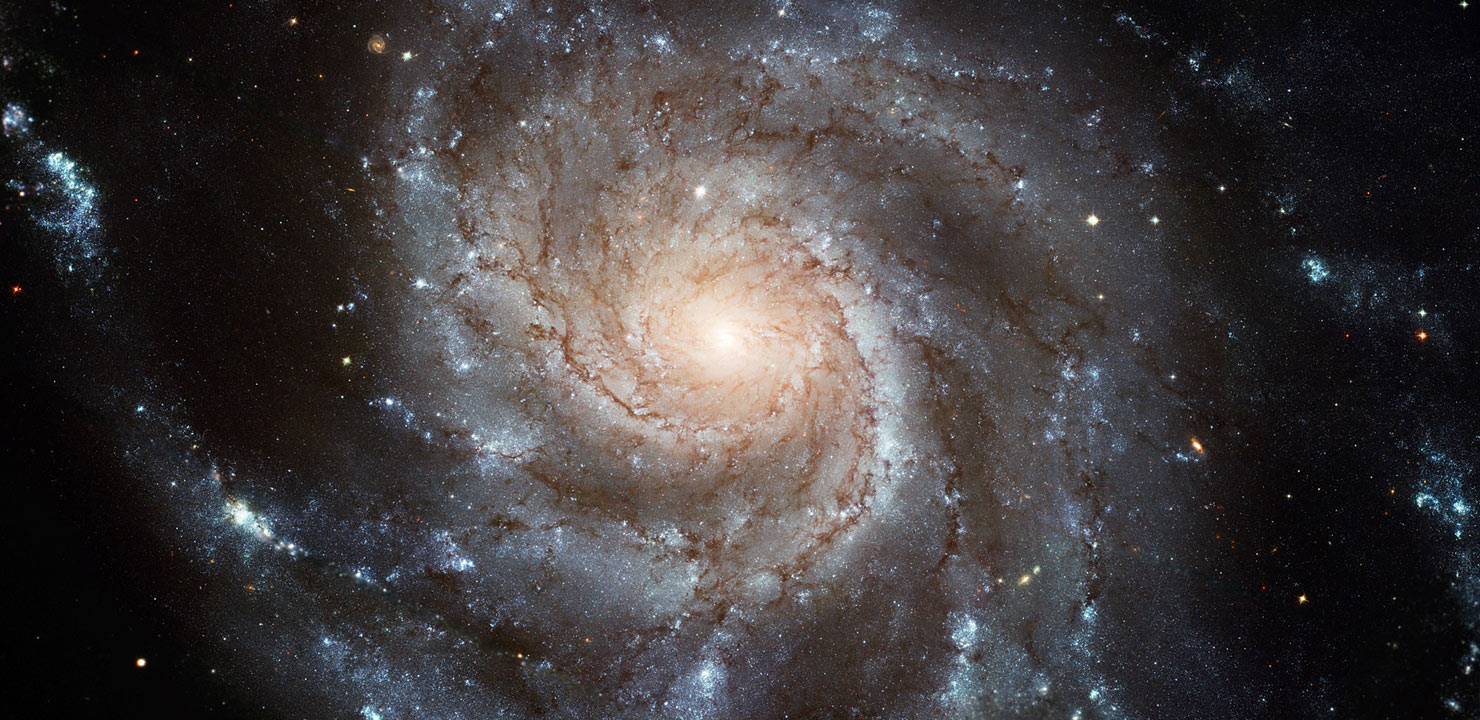
M101: Spiral Galaxy in Ursa Major
April 2013 :
One of the best examples of a star-hop is the one that takes us from Mizar (the middle star in the Handle of the Big Dipper) to the face-on spiral galaxy M101. It’s a fortuitous situation because, were it isolated, M101 might be one of the more difficult Messier objects to locate. M101 has a listed at magnitude of 7.9, but the light is spread over a roughly circular area just under one-half degree across. The situation mirrors that of M33, another elusive face-on spiral.
While there is no major star-hop path to M33, there is one to help us locate M101. Bridging the 5 degree gap between Mizar and M101 is a chain of stellar steppingstones made up of 81, 83, 84, and 86 Ursae Majoris. Mizar’s naked eye partner Alcor (80 UMa) conveniently points the way from Mizar to 81 UMa, and from there you’re on your way.
Viewed with small-aperture scopes, M101 is a diffuse circular glow about ¼ degree across. An 8-inch scope will begin to reveal traces of the spiral arms, while a large Dob will capture knots within the arms – H II regions and stellar associations bright enough to have their own NGC designations.
Four supernovae have been observed in M101 since 1900. The most recent reached 10th magnitude in September 2011. This is indeed a galaxy worthy of our attention.
When to Observe
Constellations
Space Telescope Science Institute



